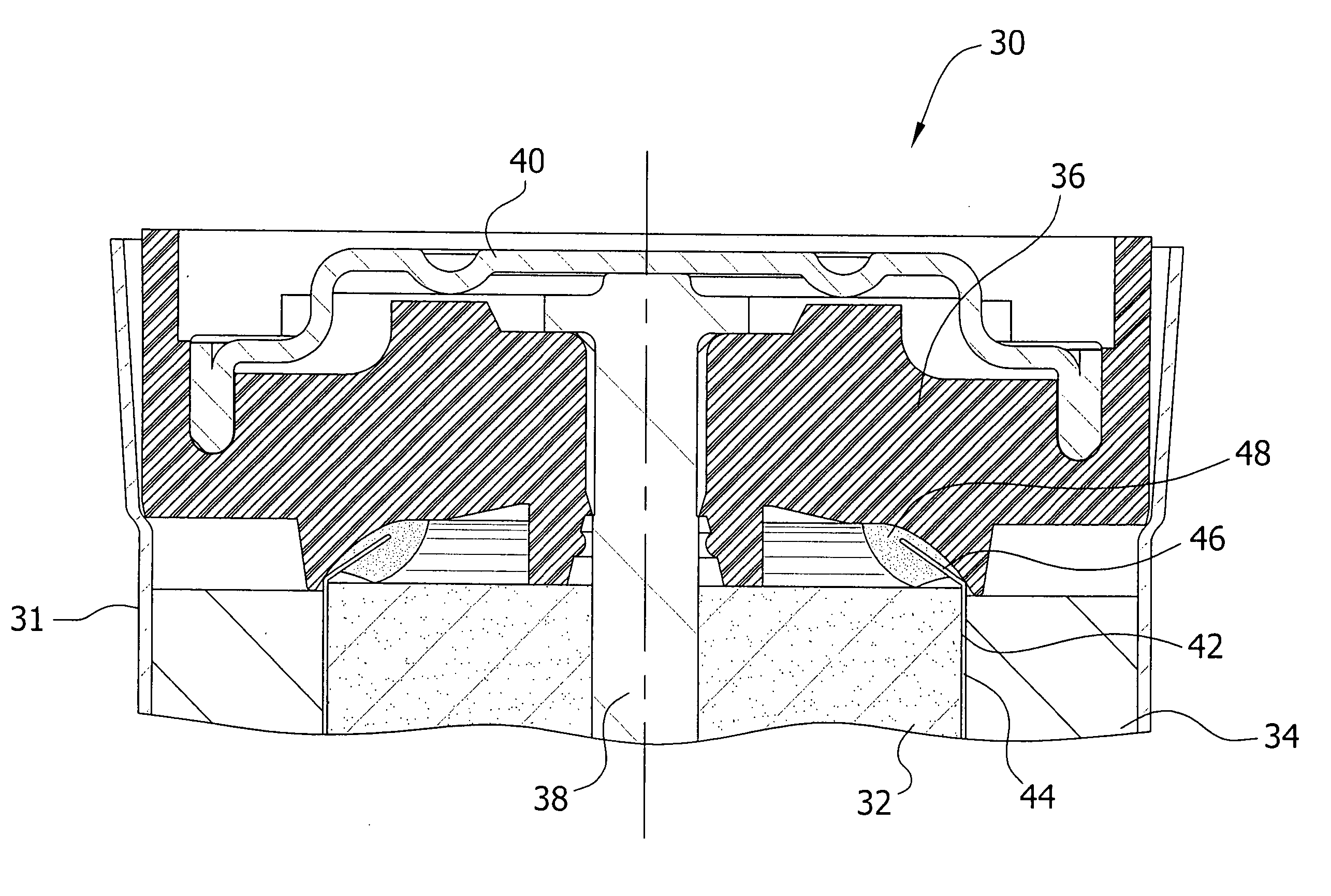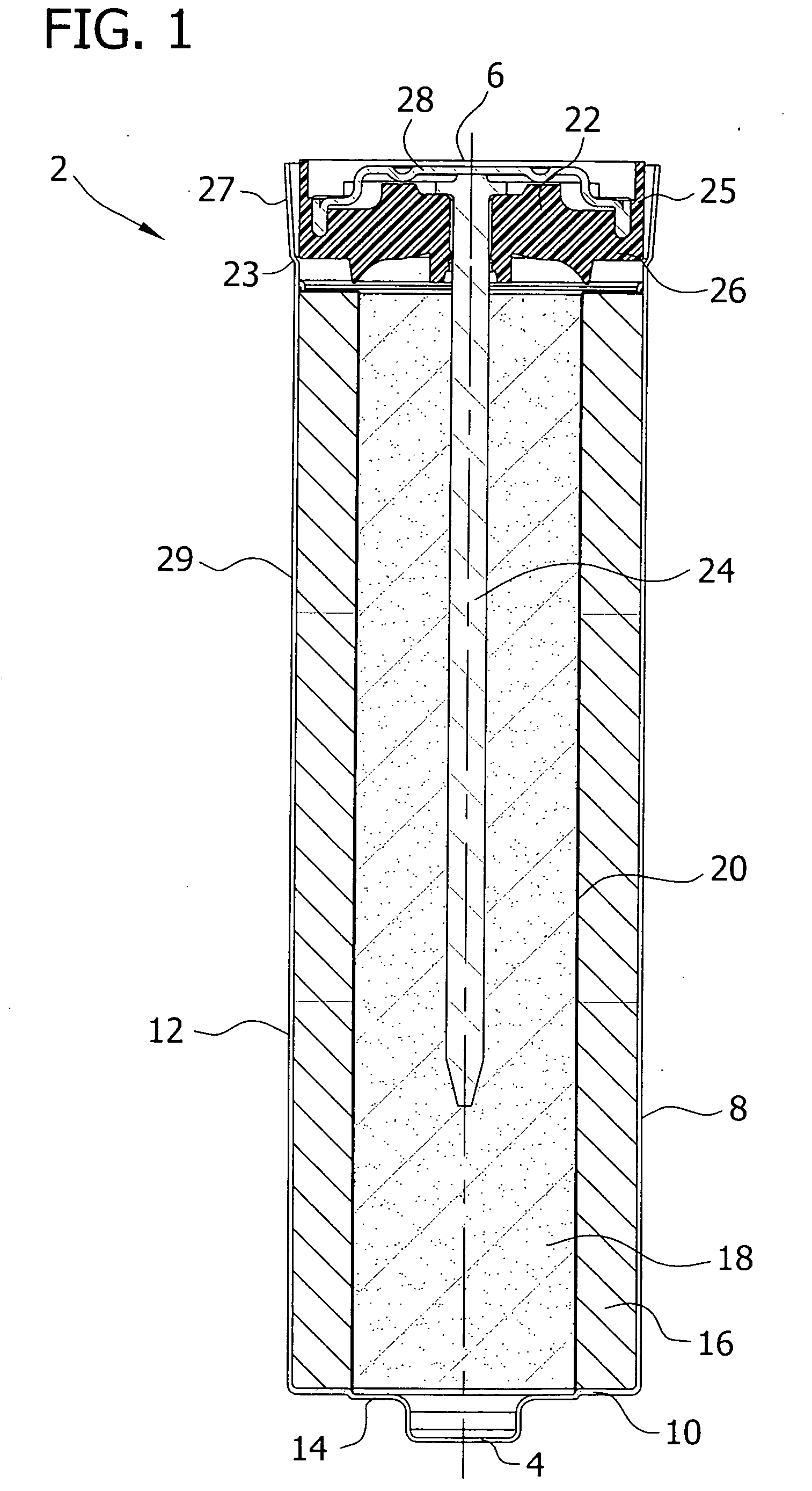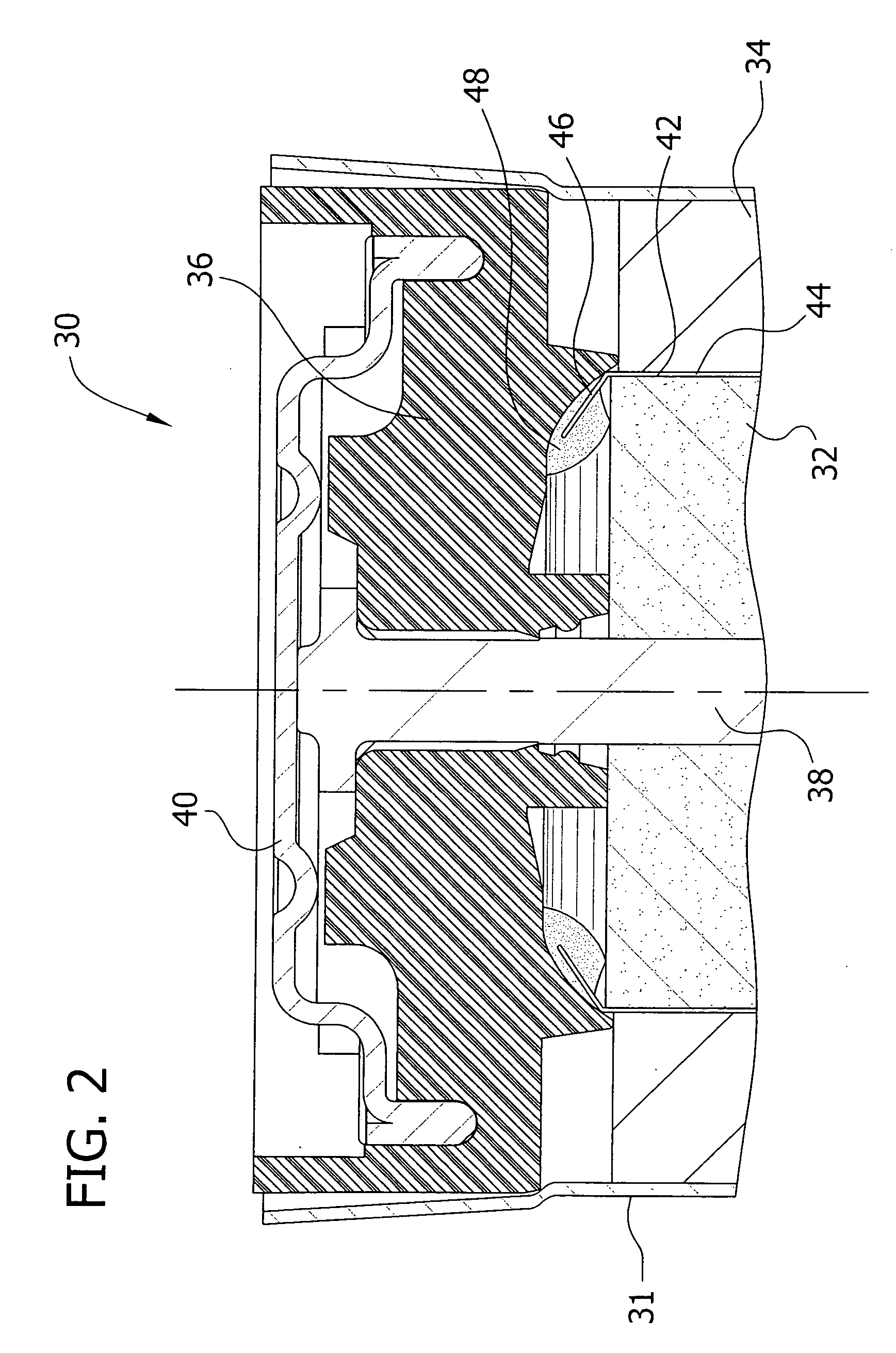Adhesive for use in an electrochemical cell
- Summary
- Abstract
- Description
- Claims
- Application Information
AI Technical Summary
Benefits of technology
Problems solved by technology
Method used
Image
Examples
example
[0079] In this Example, the bonding ability of various commercially available adhesive materials were analyzed to determine the effect of curing time on the resulting bonding strength.
[0080] Three commercially available adhesive materials were prepared as directed: Loctite® 401 (available from Henkel Technologies, Rocky Hill, Conn.), TRA-BOND 2129 and TRA-BOND 2101 (both available from TRA-CON, Bedford, Mass.). Each adhesive material was applied on a sample sealing assembly at the area between the position of the separator and the negative current collector. A pre-cut, 1 cm height, PVA tube separator was inserted into the adhesive on the sealing assembly. After 1 hour of curing, the sealing assembly-separator was immersed in a solution of 7% potassium hydroxide electrolyte solution, and placed in a 60° C. oven for 4 days.
[0081] After 4 days, the bond strength was evaluated, and the results are displayed in Table 1, below.
TABLE 1AdhesiveTrial 1Trial 2Trial 3Loctite ® 401No BondNo...
PUM
 Login to View More
Login to View More Abstract
Description
Claims
Application Information
 Login to View More
Login to View More - R&D
- Intellectual Property
- Life Sciences
- Materials
- Tech Scout
- Unparalleled Data Quality
- Higher Quality Content
- 60% Fewer Hallucinations
Browse by: Latest US Patents, China's latest patents, Technical Efficacy Thesaurus, Application Domain, Technology Topic, Popular Technical Reports.
© 2025 PatSnap. All rights reserved.Legal|Privacy policy|Modern Slavery Act Transparency Statement|Sitemap|About US| Contact US: help@patsnap.com



